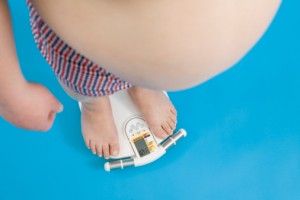Robotic Gastric Bypass Surgery Shows Promise
Weight Loss and Gastric Bypass Surgery
A system that allows surgeons to perform laparoscopic gastric bypass surgery from a remote console, controlling up to three robotic arms and a binocular camera, was successfully tested in 10 patients, according to a study in the August issue of Archives of Surgery, one of the JAMA/Archives journals.
The laparoscopic gastric bypass surgery (a Roux-en-Y procedure) is often considered the most challenging minimally invasive procedure in general surgery, requiring a learning curve of 75 to100 cases for even experienced surgeons to achieve the highest level of proficiency, according to background information in the article. Although robotic surgical techniques have been developed to assist laparoscopic gastric bypass surgery, the complex geometry of the surgery has required repositioning of the robot, complicating its use.
Catherine J. Mohr, M.S.M.E., of the Stanford School of Medicine, Calif., and colleagues report the first 10 patients to undergo a totally robotic laparoscopic Roux-en-Y gastric bypass surgery (during March and April 2004) using a technique developed to minimize robot repositioning. The results were compared with a sample of 10 patients who had undergone standard laparoscopic Roux-en-Y gastric bypass surgery during July to September 2002. There were no significant differences in the general health, age or body mass index (BMI, calculated as weight in kilograms divided by the square of height in meters) of the two sets of patients. All patients were women. The researchers compared surgical times as well as the ratio of the procedure time to the patient's BMI.
The number and severity of complication were comparable, the researchers found. "The median length of time to complete the procedure was significantly shorter with the robot (169 vs. 208 minutes)," the authors report. "In addition, the ratio of procedure time to BMI was considerably lower with the robot (median, 3.8 vs. 5.0 minutes per BMI for the laparoscopic cases). Moreover, the rate at which the operative times improved indicate that the learning curve for the robotic procedure is considerably shorter. We found that the mean minutes per BMI of our second five robotic procedures was 3.45 minutes, whereas the laparoscopic data for our senior attending surgeon did not attain a comparable five-case mean of the metric until case 42. In addition, when the data from a bariatric fellow from the same institution [Stanford Medical School] were compared, that surgeon did not match the metric until surgical case 85."
-
Weight Loss Steps To Healthy Permanent Weight Loss
10 Steps to Healthy Permanent Weight Loss1. Research different diet pl
-
Best Weight Loss Plan for Long Term Results
Best Weight Loss Plan for Long Term Results Navigating the ocean
-
Top 5 Diet Pills – Your Weight Loss Secret In A Bottle
Don’t spend another dime on diet pills till you read this eye op
-
Walking pneumonia vs. pneumonia, differences in symptoms, causes, and treatment
Atypical pneumonia, also known as walking pneumonia, is a form
-
Isometrics Is The Perfect Exercise For The Morbidly Obese
Theres a myth that people who need to lo
-
If Youre Tired Of Dieting, Please Read This!
- DON'T MISS
- 7 Ways to Pick Up the Pace of Weight Loss
- Ultrasonic Liposuction
- Can Consuming More Help You Lose Excess Body Weight?
- Weight Loss Hypnosis With Pain Relief Hypnotherapy
- Fundamental Guide towards Losing Weight
- Consume The Fat Satisfy The Muscle Review
- Weight Loss 7 Keys To Success
- Spirulina for Weight Loss: Use Super-Food Spirulina to Shed those Extra Kilos
- Top 5 Weight Loss Mistakes You Need To Correct
- Losing Those Stubborn Hard To Lose Pounds




